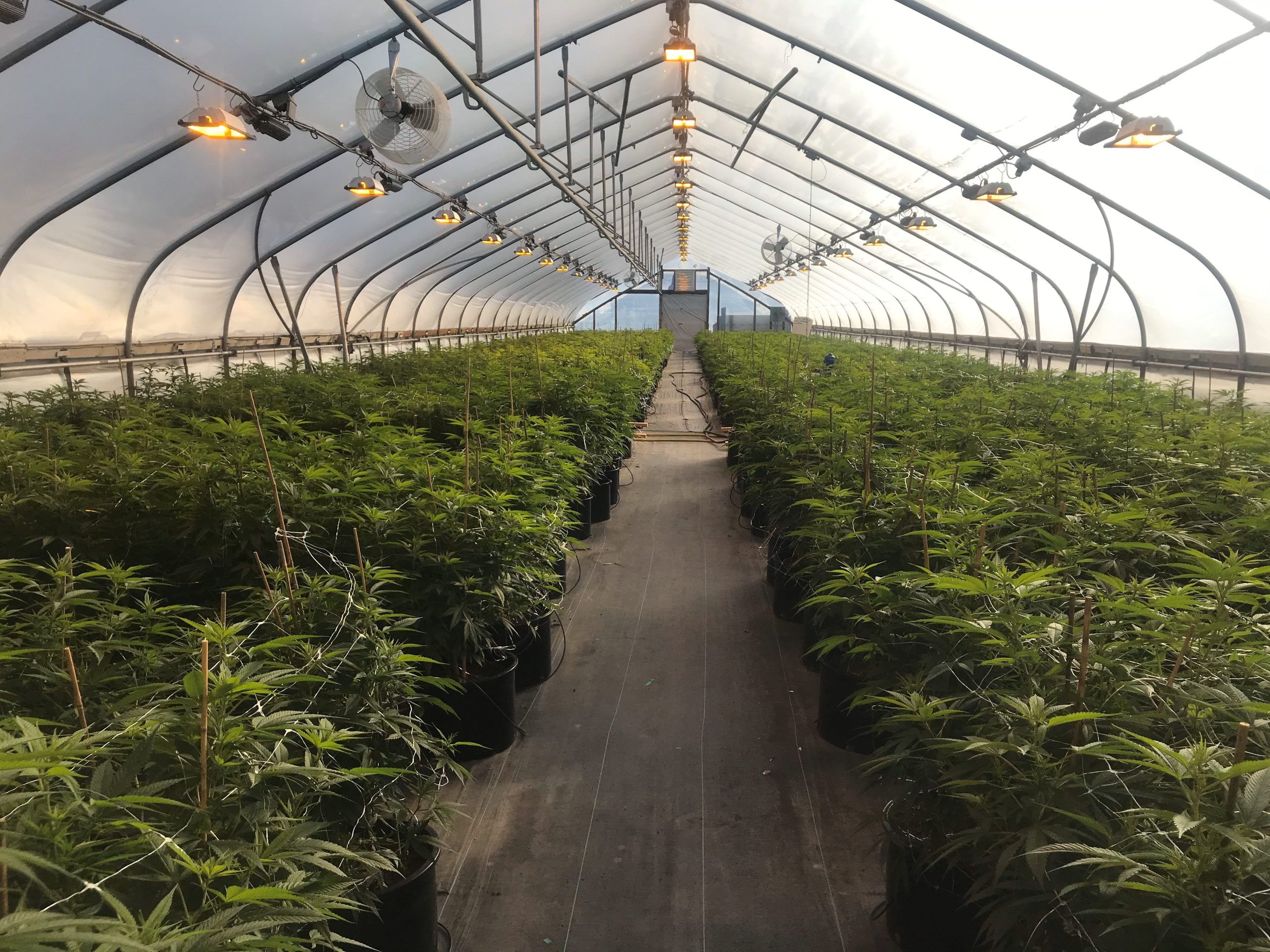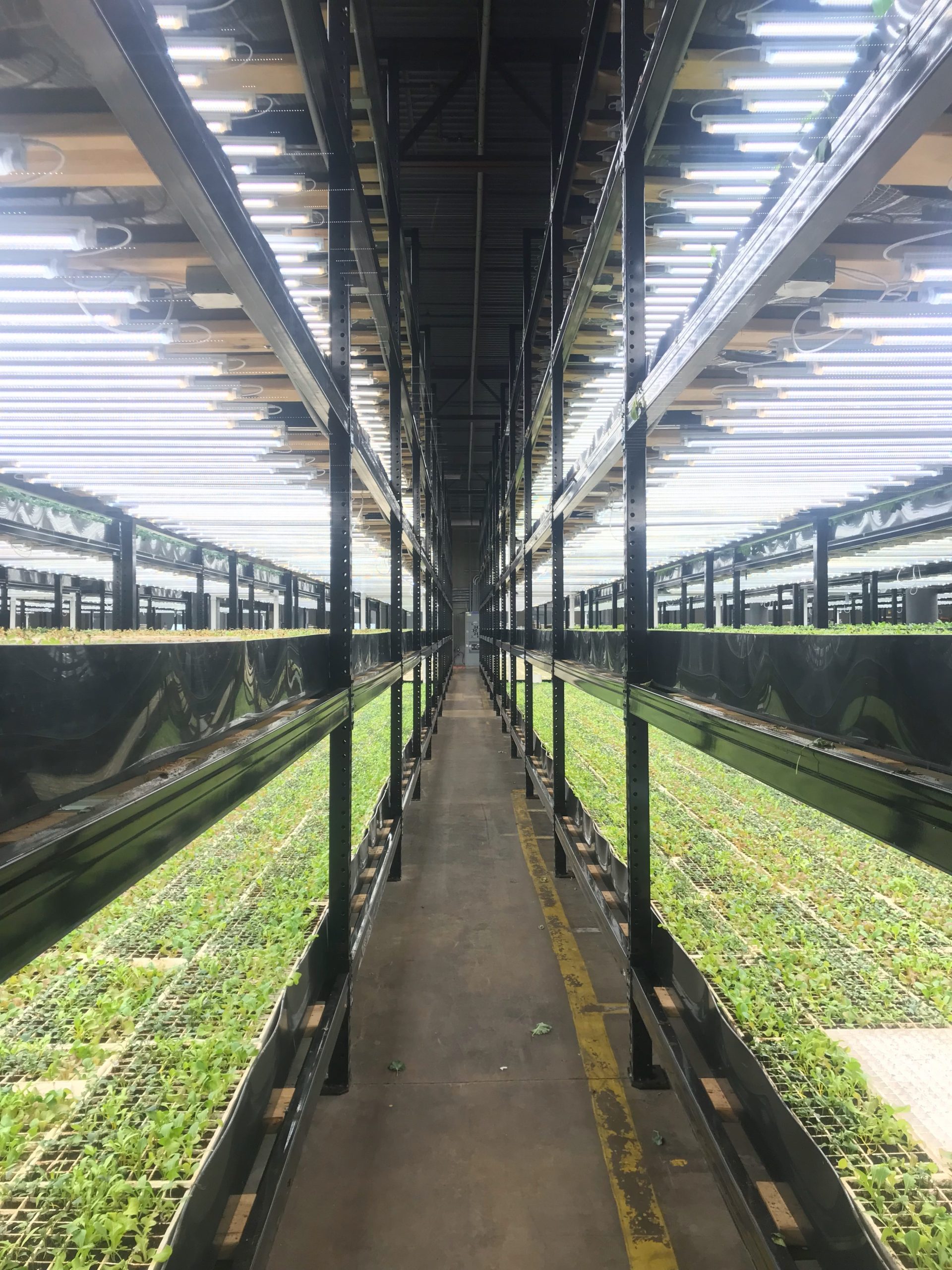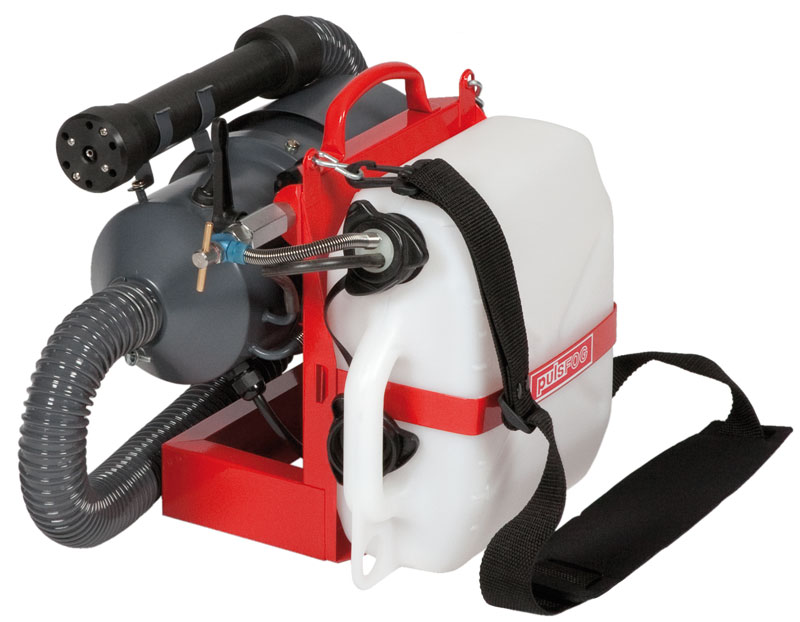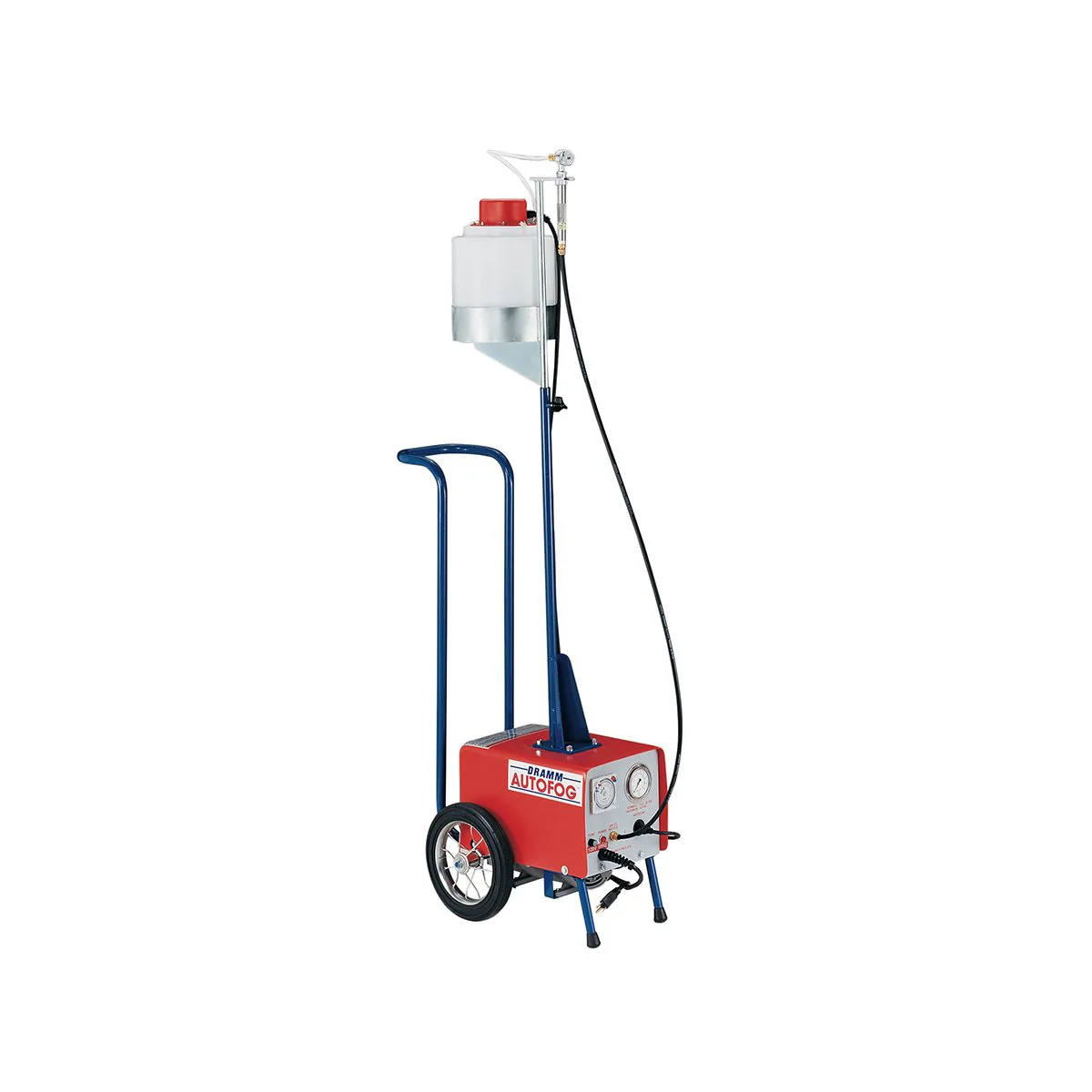Introduction
The use of ultra-low volume (ULV) application technology, also known as fogging, has become commonplace in ornamental production. More recently, the use of foggers has gained attention by both edible and cannabis producers for their sanitation and crop protection benefits. As the name suggests, ULV equipment atomizes spray particles either through heat, air, or pressure to significantly reduce the volume of spray water needed when applying chemicals. Small particle sizes enable products to be applied with excellent uniformity and coverage within both the upper and lower portions of the crop canopy that may otherwise be missed by traditional hydraulic sprayers. Screen of green cannabis and hydroponic strawberry or lettuce production systems both share tightly spaced, dense canopy characteristics (Figure 1). Additionally, vertically oriented production systems such as tiered racking for microgreen production or high-wire tomatoes make traditional means of pesticide applications difficult and labor intensive (Figure 2). Fogging equipment micronizes billions of pesticide-containing particles and disperses them to horizontal and vertical surfaces within the production space more efficiently. In the next sections, we will look at the advantages of ULV fogging technology followed by an overview of popular equipment options available through Griffin Greenhouse Supplies.

Figure 1: High density greenhouse cannabis production.

Figure 2: Vertical hydroponic microgreen production.
Advantages, Options, & Considerations
There are various advantages of using both conventional and microbial-based pesticides through ULV application technology for added disease, insect, and mite control. Additionally, some fogging equipment is even compatible with oxidizers and disinfectants, making cleanup of production spaces between crop cycles quicker and more effective:
Foggers come in many configurations and sizes, capable of treating the smallest hoop houses to multi-acre facilities. Dramm has established themselves as a reliable and “go-to” option for many producers given their professional onsite and virtual training resources as well as various product offerings appropriate for a range of production scenarios. Here are some of the most common foggers used in the green industry today:

Figure 3: Dramm Turbo Hybrid Coldfogger™.

Figure 4: Dramm Mini AutoFog™.
Can all pesticides be used through foggers? Most can, but there are exceptions such as oils and soaps. With microbial-based products that are generally thicker and more difficult to get into solution, applicators may need to increase the amount of water needed in their mixing reservoir. There are also some product labels that don’t allow for use through foggers. With purchasing a fogger through Griffin, GGSPro offers a unique service where we can create a customized fogger chart that outlines mixing rates of compatible pesticides for each of your specific production spaces. Reach out to your local Griffin sales representative or the GGSPro Technical Team to gain more information on how ULV fogging technology may reduce labor and enhance your crop protection strategies.
*Reach out to your local Griffin Sales Representative for additional product and accessory options.
Note: Not all products are registered in all states. Some pesticides are restricted use in some states or regions and not others. It is the responsibility of the applicator to read and follow all label directions, remembering that labels may change. Other products may be safe and effective. Rates, application methods, and edible status are detailed in our GGSPro Insecticide & Fungicide Guides. Griffin also offers the 6th Edition GGSPro Technical Reference Guide. This valuable resource outlines a wide range of pest control options and information on pollinator safety, BCA’s, scouting, weed management, plant lighting, nutrition, water quality and more!
The use of ultra-low volume (ULV) application technology, also known as fogging, has become commonplace in ornamental production. More recently, the use of foggers has gained attention by both edible and cannabis producers for their sanitation and crop protection benefits. As the name suggests, ULV equipment atomizes spray particles either through heat, air, or pressure to significantly reduce the volume of spray water needed when applying chemicals. Small particle sizes enable products to be applied with excellent uniformity and coverage within both the upper and lower portions of the crop canopy that may otherwise be missed by traditional hydraulic sprayers. Screen of green cannabis and hydroponic strawberry or lettuce production systems both share tightly spaced, dense canopy characteristics (Figure 1). Additionally, vertically oriented production systems such as tiered racking for microgreen production or high-wire tomatoes make traditional means of pesticide applications difficult and labor intensive (Figure 2). Fogging equipment micronizes billions of pesticide-containing particles and disperses them to horizontal and vertical surfaces within the production space more efficiently. In the next sections, we will look at the advantages of ULV fogging technology followed by an overview of popular equipment options available through Griffin Greenhouse Supplies.

Figure 1: High density greenhouse cannabis production.

Figure 2: Vertical hydroponic microgreen production.
Advantages, Options, & Considerations
There are various advantages of using both conventional and microbial-based pesticides through ULV application technology for added disease, insect, and mite control. Additionally, some fogging equipment is even compatible with oxidizers and disinfectants, making cleanup of production spaces between crop cycles quicker and more effective:
- Superior Coverage – very small particle size and high-pressure delivery combine for thorough coverage of the plant canopy as well as production surfaces.
- Labor Savings – growers find Coldfoggers and thermal foggers to be about ten times faster than hydraulic spraying. Autofoggers are unattended, turned on and off by timers.
- Reduced Pesticide Exposure – (Autofoggers only) the applicator is not in the greenhouse or production space at any time during the pesticide application.
- Reduced Water Volume – Autofoggers, for example, require only 2-4 liters to treat 10,000 sq ft of greenhouse space for most chemicals. Dry foliage decreases foliar disease risk and the potential for runoff.
- Reduced Pesticide Usage – most growers feel they make fewer pesticide applications over the course of a year due to improved effectiveness.
- Reduced Potential for Visible Residue and Phytotoxicities – fogging avoids pesticides “puddling up” on plant surfaces, reducing visible residue and decreasing the risk of phytotoxicity. Important: Heed all label cautions about potential phytotoxicities, don’t assume that low volume applications will not cause damage.
Foggers come in many configurations and sizes, capable of treating the smallest hoop houses to multi-acre facilities. Dramm has established themselves as a reliable and “go-to” option for many producers given their professional onsite and virtual training resources as well as various product offerings appropriate for a range of production scenarios. Here are some of the most common foggers used in the green industry today:
- Turbo Hybrid Coldfogger™ – a directed low volume applicator that comes with multiple nozzles to match particle size with the job at hand. Backpack unit that requires an extension cord for operation. Ideal for applying conventional and microbial-based pesticides in precise, hard to reach areas in tight quarters (Figure 3).
- AutoFog™ – several models are available with coverage ranging up to 70,000 sq ft with HAF fans. Fully automated operation with timers to begin and end the application minimizing application labor required. These units produce the smallest particle size of all the Dramm foggers (Figure 4).
- ColdFogger™ – a special nozzle and a high pressure 150’ hose (other lengths available), direct very small particles under high pressure for rapid and thorough coverage. Only one liter of water is required for effective fogging of 1,000 sq ft of plant material.
- PulsFOG™ – gasoline engine driven thermal foggers are the choice when large areas need to be fogged quickly. A BioPulsFOG™ is also available for applying heat sensitive chemicals, including many microbial insecticides and fungicides.

Figure 3: Dramm Turbo Hybrid Coldfogger™.

Figure 4: Dramm Mini AutoFog™.
Can all pesticides be used through foggers? Most can, but there are exceptions such as oils and soaps. With microbial-based products that are generally thicker and more difficult to get into solution, applicators may need to increase the amount of water needed in their mixing reservoir. There are also some product labels that don’t allow for use through foggers. With purchasing a fogger through Griffin, GGSPro offers a unique service where we can create a customized fogger chart that outlines mixing rates of compatible pesticides for each of your specific production spaces. Reach out to your local Griffin sales representative or the GGSPro Technical Team to gain more information on how ULV fogging technology may reduce labor and enhance your crop protection strategies.
| Item Description | Item # |
|---|---|
| Dramm Mini AutoFog MLVH (up to 3,000-5,000 sqft) | 41-1200 |
| Dramm AutoFog SLVH (up to 12,000-28,000 sqft) | 62-6003251 |
| Dramm AutoFog LVH (up to 30,000-70,000 sqft) | 62-6003201 |
| Dramm ColdFogger CF20 | 41-1488 |
| Dramm PulsFOG K-22 | 41-1331 |
| Dramm BioPulsFOG K-22 | 41-1332 |
| Dramm Turbo ULV Hybrid Coldfogger | 62-6003261 |
Note: Not all products are registered in all states. Some pesticides are restricted use in some states or regions and not others. It is the responsibility of the applicator to read and follow all label directions, remembering that labels may change. Other products may be safe and effective. Rates, application methods, and edible status are detailed in our GGSPro Insecticide & Fungicide Guides. Griffin also offers the 6th Edition GGSPro Technical Reference Guide. This valuable resource outlines a wide range of pest control options and information on pollinator safety, BCA’s, scouting, weed management, plant lighting, nutrition, water quality and more!
